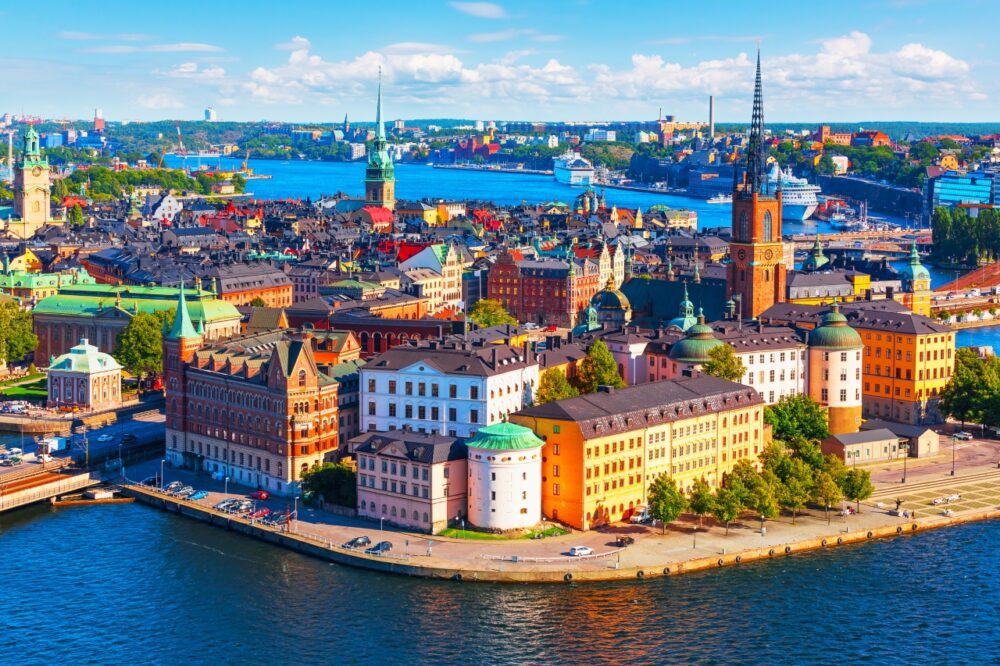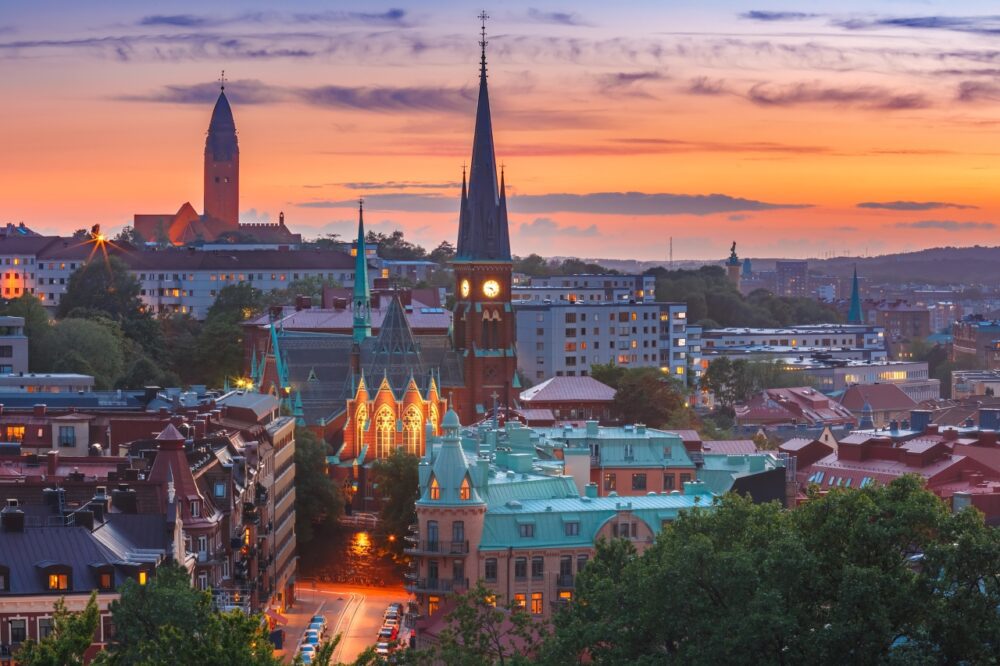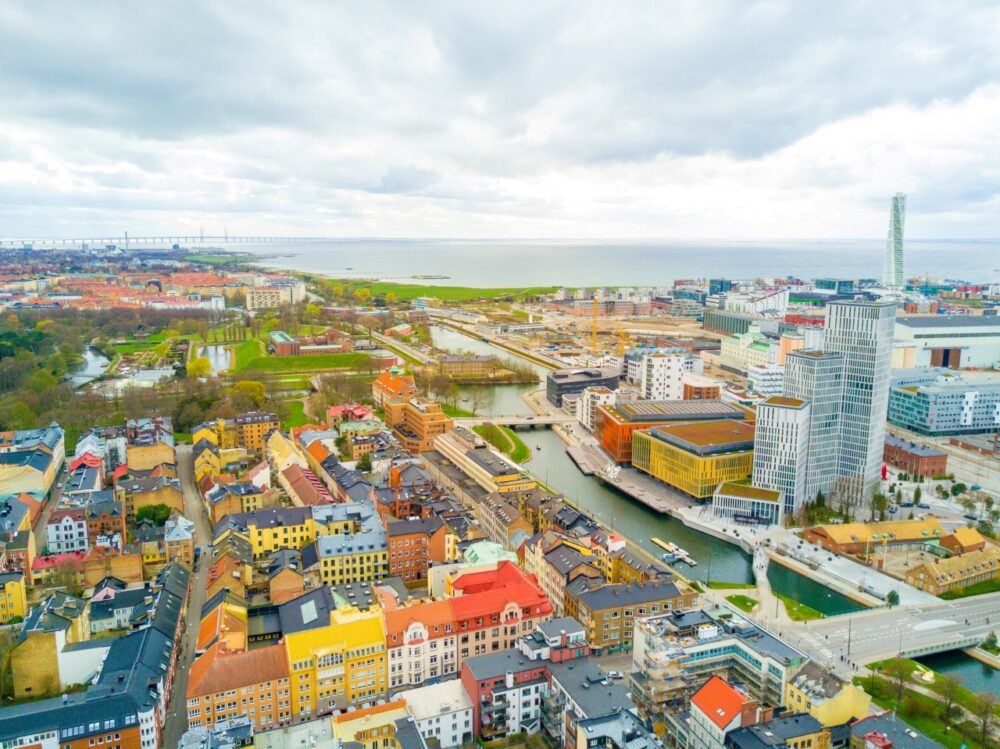
Introduction
Sweden is a country that blends natural beauty with cutting-edge design, rich history, and a deep appreciation for the simple things in life. From the stylish streets of Stockholm to the vast wilderness of the north, Sweden is a country of contrasts. You can spend your days exploring medieval towns, cruising through the thousands of islands that make up the Stockholm Archipelago, or chasing the Northern Lights in Lapland. Whether you’re a city lover, a nature enthusiast, or a fan of history, Sweden offers an unforgettable travel experience.
On my first trip to Sweden, I was struck by how effortlessly it balances modernity with tradition. One moment I was sipping coffee (or fika, as the Swedes say) in a chic Stockholm café, and the next I was hiking through pristine forests, surrounded by nothing but the sound of birds and the wind in the trees. Sweden is a country that invites you to slow down, appreciate nature, and savour life. Here’s why Sweden should be at the top of your travel list.
Table of Contents
Reasons You Should Visit Sweden
1. Incredible Natural Beauty
Sweden is home to some of the most breathtaking landscapes in Europe, from the dense forests and mirror-like lakes of Småland to the rugged mountains and frozen expanses of Lapland. One of the highlights of my trip was exploring Abisko National Park in the far north, where I hiked under the midnight sun and experienced the sheer beauty of the Arctic wilderness. For those visiting in winter, Kiruna is the place to be—snowmobiling, dog sledding, and chasing the Northern Lights are all must-dos.
The Stockholm Archipelago, a collection of more than 30,000 islands and islets, is another natural wonder. I spent a peaceful day island-hopping, exploring quaint fishing villages, and swimming in the Baltic Sea. Whether you’re hiking, kayaking, or simply enjoying the serenity of the Swedish countryside, the country’s natural beauty will leave you in awe.
2. Fika Culture and Delicious Cuisine
Sweden’s love for fika—the art of taking a coffee break with something sweet—is one of its most charming traditions. Every afternoon, Swedes take a moment to relax, catch up with friends, and enjoy a cup of coffee accompanied by a kanelbullar (cinnamon bun) or kladdkaka (a gooey chocolate cake). It’s a ritual that encourages slowing down and savouring life, and I quickly got used to taking fika breaks during my trip.
Swedish cuisine is simple, hearty, and delicious. I particularly loved trying smörgåsbord, a traditional buffet featuring cold and hot dishes like herring, meatballs, and gravlax. In Gothenburg, I indulged in fresh seafood—especially räkmacka, a shrimp sandwich that’s practically a work of art. Sweden’s culinary scene has also embraced modern trends, and you’ll find plenty of Michelin-starred restaurants and farm-to-table dining experiences, especially in cities like Stockholm and Malmö.
3. Design and Innovation
Sweden is a global leader in design, and it shows. From sleek furniture and architecture to minimalist fashion, the country is synonymous with style and innovation. Stockholm is a design lover’s paradise, with its many galleries, shops, and museums dedicated to Swedish and Scandinavian design. One of my favourite spots was the Moderna Museet, which showcases contemporary art and design in a beautiful waterfront setting.
Even the cities themselves feel designed with care—Gothenburg’s trams are as stylish as they are functional, and Malmö’s eco-friendly architecture, like the iconic Turning Torso, reflects Sweden’s commitment to sustainability. The Swedes have a knack for blending form and function, and everywhere you go, you’ll be surrounded by simple, elegant design.
4. Sustainability and Green Living
Sweden is one of the most environmentally conscious countries in the world, and its commitment to sustainability is evident everywhere. From the use of renewable energy to the focus on eco-friendly living, Sweden is a pioneer in green living. The cities are full of parks and green spaces—Stockholm has more than 40% of its area covered by water and green areas, and I loved walking along the canals and through the tree-lined streets.
Even outside the cities, Sweden encourages a close connection to nature. The Allemansrätten, or Right to Roam, allows everyone to freely explore the countryside, forests, and lakes, provided they respect the environment. This means you can hike, camp, and forage for berries or mushrooms in some of the most beautiful natural settings, free from restrictions. It’s a fantastic way to truly experience the Swedish outdoors.
5. Rich History and Cultural Heritage
Sweden’s history stretches back thousands of years, and it’s visible in the many castles, churches, and ancient ruins scattered across the country. I loved exploring Gamla Stan, Stockholm’s old town, where the narrow, cobblestone streets and colourful buildings transport you back to medieval times. The Royal Palace and Nobel Museum are must-visits, offering a glimpse into Sweden’s royal and intellectual history.
But history in Sweden isn’t just about kings and queens—it’s also about the Vikings. In Uppsala, I visited the famous Viking burial mounds, learning about the Norse legends and Viking culture that shaped Sweden’s past. The country’s many museums, from the Vasa Museum in Stockholm to the Landskrona Citadel in the south, offer a fascinating insight into Sweden’s rich cultural heritage.
Best Places to Visit in Sweden
1. Stockholm

Stockholm is often called the “Venice of the North” for its stunning setting on 14 islands connected by over 50 bridges. The city is a perfect blend of historic charm and modern innovation. One of my favourite experiences in Stockholm was wandering through Gamla Stan, the old town, where I explored the narrow alleyways, visited the impressive Royal Palace, and admired the colourful buildings that line the square.
Stockholm is also a city of culture, with world-class museums like the Vasa Museum, which houses a beautifully preserved 17th-century warship, and the ABBA Museum, dedicated to Sweden’s most famous pop group. For a taste of modern Swedish design, I loved exploring the Södermalm district, which is packed with cool boutiques, art galleries, and hip cafés. And don’t miss taking a boat tour through the Stockholm Archipelago—it’s the perfect way to see the city from the water.
2. Gothenburg

Gothenburg, Sweden’s second-largest city, is a laid-back yet vibrant destination, known for its excellent seafood, relaxed vibe, and strong maritime history. I spent a day exploring the city’s harbour area, where you can hop on a ferry and take a scenic ride through the Göta Canal or visit the Maritime Museum. Haga, Gothenburg’s oldest neighbourhood, is full of cosy cafés and unique shops, and it’s the perfect spot to enjoy a fika break.
One of the highlights of my time in Gothenburg was visiting the Liseberg Amusement Park, which is a must if you’re travelling with family. In summer, the park comes alive with music festivals and roller coasters, while in winter, it transforms into a magical Christmas wonderland. For nature lovers, Gothenburg’s location makes it an ideal base for exploring the Bohuslän Archipelago, where you can kayak between tiny islands and discover remote fishing villages.
3. Malmö

Located just across the bridge from Copenhagen, Malmö is a city that’s always looking forward. Known for its sustainable urban planning and modern architecture, Malmö is one of Sweden’s most innovative cities. The Turning Torso, a twisted skyscraper that dominates the skyline, is a striking example of the city’s futuristic vibe. I loved strolling through the Västra Hamnen district, where eco-friendly buildings meet the sea, creating a peaceful atmosphere perfect for a seaside walk.
Malmö also has a lively food scene, and the Malmö Saluhall market is the best place to sample local produce and gourmet street food. For a dose of history, I explored Malmöhus Castle, the oldest Renaissance castle in Scandinavia, which also houses the city’s art and natural history museums. Malmö’s mix of old and new makes it an exciting and diverse destination.
4. Uppsala

Just a short train ride from Stockholm, Uppsala is a historic city that’s home to Sweden’s oldest university, founded in 1477. The city has a youthful energy, thanks to its large student population, but it’s also rich in history. I started my visit at Uppsala Cathedral, the tallest church in Scandinavia, where Swedish kings and notable figures like Carl Linnaeus are buried.
One of the highlights of my trip to Uppsala was visiting the Viking burial mounds at Gamla Uppsala. Walking among these ancient mounds, surrounded by fields and forests, gave me a real sense of Sweden’s Viking past. For a peaceful afternoon, I recommend taking a walk through the Botanical Garden, which was founded by Linnaeus himself.
5. Lund
Lund, located in southern Sweden, is one of the country’s oldest cities and home to another prestigious university. The town is full of history and charm, with its narrow streets, traditional wooden houses, and the impressive Lund Cathedral, a Romanesque masterpiece. Climbing the tower gives you a panoramic view of the town and surrounding countryside.
Lund’s compact size makes it easy to explore on foot, and I spent a leisurely afternoon wandering through the Botanical Garden and visiting the Lund University Historical Museum, which offers fascinating insights into the town’s medieval past. Lund’s laid-back atmosphere and beautiful architecture make it a perfect destination for a peaceful weekend getaway.
6. Visby (Gotland Island)
Visby, located on the island of Gotland, is a beautifully preserved medieval town and a UNESCO World Heritage site. Known for its well-preserved city walls, cobbled streets, and old stone buildings, Visby feels like stepping back in time. I wandered through the narrow lanes, stopping to admire the ruins of St. Mary’s Cathedral and the charming squares dotted with cafés and shops.
Visby is also the heart of Sweden’s medieval history, and if you visit in August, you can experience Medieval Week, when the town transforms into a medieval village with reenactments, markets, and jousting tournaments. Gotland itself is known for its stunning natural beauty, with rugged coastlines, sandy beaches, and ancient Viking sites just waiting to be explored.
7. Orebro
Orebro, located in central Sweden, is best known for its fairytale-like Orebro Castle, which sits on an island in the middle of the Svartån River. I took a guided tour of the castle, learning about its rich history as a royal residence and a prison. The views from the castle’s towers are fantastic, especially at sunset when the city lights up.
The city is also home to Wadköping Open-Air Museum, where you can explore traditional Swedish wooden houses and learn about the region’s history and culture. For a day trip, head to Lake Hjälmaren, Sweden’s fourth-largest lake, where you can hike, swim, or take a boat tour. Orebro’s mix of history and nature makes it a great stop on any trip through Sweden.
8. Karlstad
Located on the shores of Lake Vänern, Sweden’s largest lake, Karlstad is a city surrounded by water and nature. I loved taking a boat trip across the lake, stopping at tiny islands and enjoying the peaceful atmosphere. Karlstad is also a great base for exploring the Glaskogen Nature Reserve, where you can hike, camp, and canoe through pristine forests and lakes.
Karlstad’s central square, Stora Torget, is a lively spot full of shops, restaurants, and cafés, and I enjoyed a relaxed afternoon exploring the city’s museums, including the Värmland Museum, which offers a fascinating look at the region’s history and culture. If you love being by the water, Karlstad’s lakeside charm will win you over.
9. Helsingborg
Helsingborg, located on the southwest coast of Sweden, is a charming coastal city with a rich history. I started my visit at Kärnan, a medieval tower that offers panoramic views over the city and the Öresund Strait. From Helsingborg, you can take a short ferry ride across to Helsingør in Denmark, making it a great base for exploring both countries.
One of my favourite spots in Helsingborg was the Sofiero Palace and Gardens, a beautiful estate just outside the city where you can wander through lush gardens and enjoy views of the sea. For a taste of local culture, the city’s waterfront is full of restaurants serving fresh seafood, and I highly recommend trying Swedish crayfish if you’re visiting in late summer.
10. Kiruna
If you’re seeking adventure and natural beauty, Kiruna in Swedish Lapland is the place to go. As the northernmost town in Sweden, Kiruna offers incredible opportunities to experience the Arctic wilderness. I visited in winter and had the chance to stay in the famous Icehotel, a hotel made entirely of ice and snow. Sleeping in an ice room was an unforgettable experience, and the hotel’s ice sculptures are works of art.
Kiruna is also one of the best places in the world to see the Northern Lights, and chasing the aurora borealis was one of the highlights of my trip. If you visit in summer, the region is bathed in the midnight sun, offering endless daylight for hiking, fishing, and exploring the wilderness. Kiruna’s remote beauty and unique experiences make it a must-visit for nature lovers and adventure seekers.
Travel Tips for Sweden
Getting Around Sweden
Sweden’s public transport system is efficient and extensive, with trains and buses connecting most cities and towns. SJ trains are the best way to travel long distances between places like Stockholm, Gothenburg, and Malmö, while buses offer reliable service to smaller towns and rural areas. In cities, trams, buses, and metro systems make getting around easy. Ferries are essential for visiting the country’s many islands. If you plan to explore Sweden’s natural landscapes, renting a car gives you the freedom to roam, especially in regions like Lapland.
Best Time to Visit Sweden
The best time to visit Sweden depends on what you want to experience. Summer (June to August) is ideal for outdoor activities like hiking, sailing, and enjoying the midnight sun in the far north. This is also festival season, with lively events like Midsummer. Winter (December to February) is perfect for experiencing Sweden’s snowy landscapes, northern lights, and skiing in places like Åre. Spring (April to May) and autumn (September to October) offer mild weather and fewer tourists, making them great for exploring cities or hiking in quieter settings.
Passport and Visa Requirements for Sweden
Sweden is part of the Schengen Area, so visitors from EU/EEA countries can enter with just an ID card. Travellers from US, UK, Canada, Australia, and many other countries can stay visa-free for up to 90 days within the Schengen Zone. Your passport should be valid for at least three months beyond your planned departure date. If you’re visiting neighbouring countries like Norway or Denmark, border crossings are seamless but always carry your ID or passport.
Currency and Banks in Sweden
Sweden uses the Swedish Krona (SEK), and while credit and debit cards are accepted almost everywhere, Sweden is becoming a largely cashless society. ATMs are still available in cities and towns, but you’ll find that most businesses prefer card payments, even for small transactions. Tipping is not mandatory, but rounding up the bill or leaving 5-10% in restaurants is appreciated. For foreign currency exchange, it’s best to use ATMs or bank exchange services for fair rates.
Language and Useful Phrases to Know
The official language is Swedish, but almost everyone speaks excellent English, especially in cities and tourist areas. However, learning a few basic Swedish phrases is always appreciated. Try “Hej” (hello), “Tack” (thank you), and “Ursäkta” (excuse me). In more rural areas, especially in the north, having some Swedish handy can be helpful, as English might not be as common.
Budgeting and Costs for Sweden
Sweden is known for being expensive, particularly in cities like Stockholm and Gothenburg, but there are ways to travel on a budget. Public transport is affordable, and buying a travel pass can save money if you plan to use it often. For meals, dining at local cafes or opting for self-catering is a great way to save, as restaurants can be pricey. Sweden’s stunning nature—lakes, forests, and national parks—is free to explore, making outdoor activities a budget-friendly way to experience the country. Booking accommodation in advance can also help reduce costs, especially during the peak summer season.
Conclusion
Sweden is a country that offers a little bit of everything—from vibrant cities filled with culture and history to vast landscapes that beg to be explored. Whether you’re strolling through the medieval streets of Visby, enjoying fika in Stockholm, or chasing the Northern Lights in Kiruna, Sweden invites you to experience its beauty at your own pace.
What I love most about Sweden is the way it encourages a connection with nature, whether through the Right to Roam or the abundance of national parks and green spaces. Combined with the country’s rich history, innovative design, and warm, welcoming people, Sweden is a destination that will capture your heart and keep you coming back for more.
